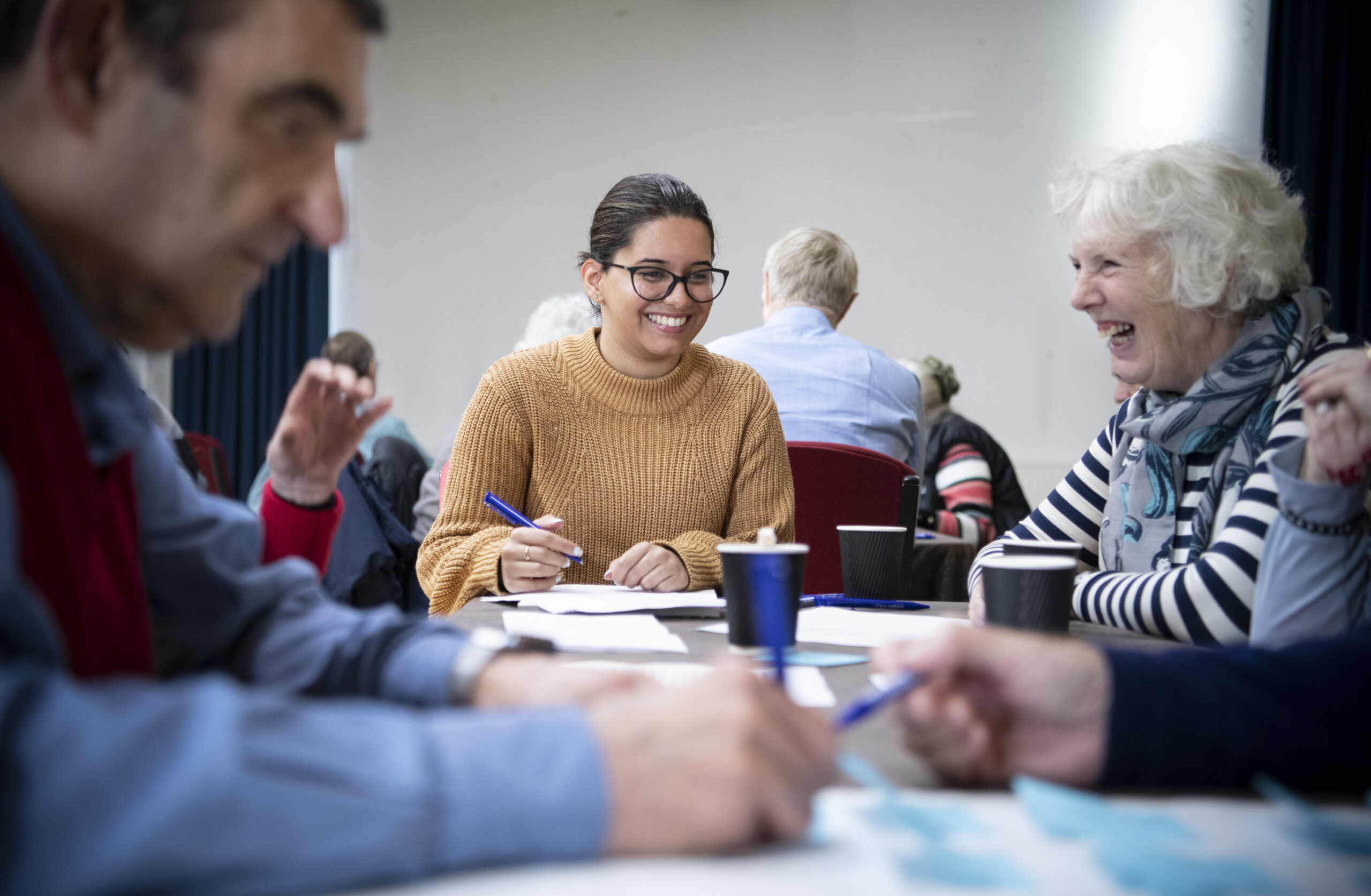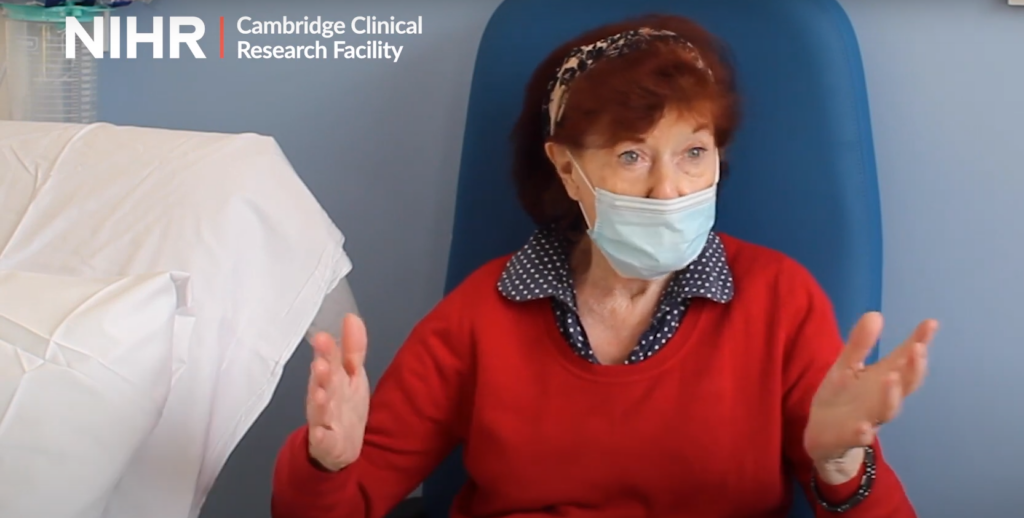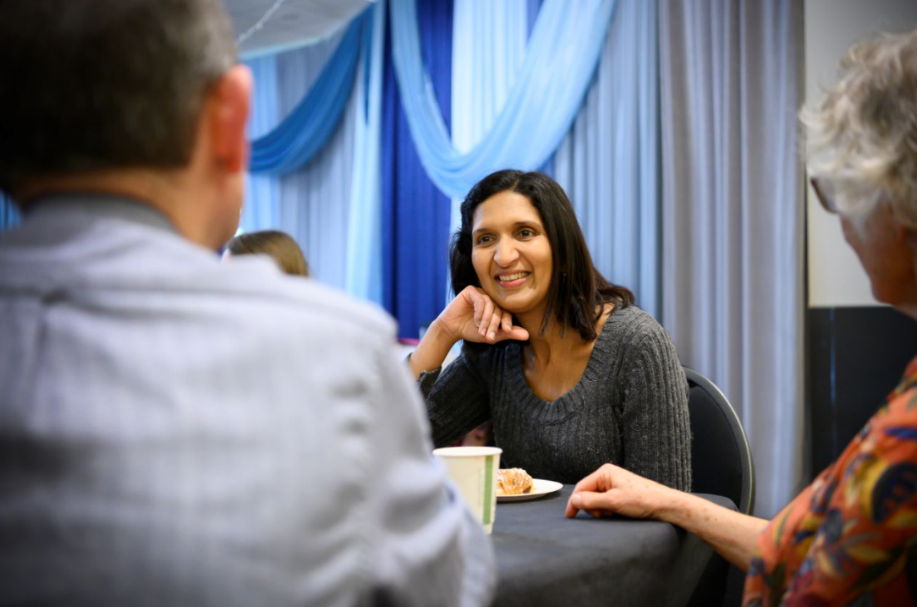NIHR Cambridge BRC and NIHR Cambridge CRF Joint Equality, Diversity and Inclusion Strategy


This Strategy is intended to be read and delivered in parallel with our Patient and Public Involvement, Engagement and Participation (PPIE) Strategy 2022-2027.
This is a joint strategy from the NIHR Cambridge Biomedical Research Centre and NIHR Cambridge Clinical Research Facility. Open this link for an accessible word document of the strategy. Click on the bookmarks below if you wish to jump to a particular section within the strategy.
Statement of Commitment and Vision
Governance and lines of reporting
Statement of Commitment and Vision
The NIHR Cambridge Biomedical Research Centre (BRC) and the NIHR Cambridge Clinical Research Facility (CRF) have been funded by the National Institute for Health and Social Care Research (NIHR) to translate cutting-edge science into diagnostics, treatments and preventative strategies that improve the lives of our patients and the wider population, and that supports the training and development of the next generation of world-leading researchers and research delivery teams.
We are committed to developing and sustaining equality, diversity and inclusion (EDI) in our research, working with our local communities to reduce health inequalities and ensuring that the results of our research are accessible to those who need them.
This strategy outlines the commitment of the NIHR Cambridge BRC and CRF, both individually and working jointly with our partners, to value diversity, champion equity and equality and sustain a research environment in which everyone feels included. It is intended to be read and implemented in parallel with our Patient and Public Involvement and Engagement (PPIE) strategy, as public contributors and research participants are key stakeholders in an inclusive research environment. Similarly, this strategy compliments our BRC Capacity Building Strategy, the CRF workforce development strategy and the EDI strategies of our partner organisations as outlined below, to support the maturation of our organisations as diverse and inclusive work environments.
Working in Partnership
The NIHR Cambridge BRC and Cambridge CRF are partnerships between the University of Cambridge and Cambridge University Hospitals NHS Foundation Trust, funded by the NIHR. Our strategy aligns with and complements the EDI strategies of these organisations.
You can read the EDI strategies of our host and partner organisations here:
Cambridge University Hospitals NHS Foundation Trust EDI Strategy
The University of Cambridge EDI Strategy
The National Institute for Health and Social Care Research EDI Strategy
Through our co-location on the Cambridge Biomedical Campus we are fortunate to be able to work closely with the Royal Papworth Hospital and Cambridge and Peterborough NHS Foundation Trust and with NIHR colleagues in the NIHR BioResource, NIHR Applied Research Collaboration (East of England) and NIHR Clinical Research Network (Eastern). Our EDI strategy recognises and celebrates our shared responsibility to create an inclusive research environment across campus and we are committed to working together to make this happen.
Our joint BRC and CRF EDI strategy will emphasise our shared commitments to EDI, promote collaboration and support working in partnership with our mutual communities.
Governance and lines of reporting
Accountability and reporting of progress, barriers and best practice are cornerstones of our shared EDI strategy. The BRC and CRF have their own internal governance structures with reporting lines to our host organisation, Cambridge University Hospitals NHS Foundation Trust and our key partner, the University of Cambridge. This is strengthened by co-opted members from the BRC and CRF sitting within each other’s governance structures and through public membership on key decision-making committees.
The individual and joint governance arrangements of the NIHR Cambridge BRC and CRF are outlined in the organogram and table below. The tables are colour-coded to illustrate how they link with the organogram, and to highlight cross-organisational membership to promote strategy alignment, prevent duplication and share best practice.
The organogram and table are also available separately in an accessible word-document.


CUH Research Board
CUH Executive Director for Research
CUH Director of Finance
CUH R&D Finance Director
CUH Director of Research
CUH Chief Nurse
Professor of Nursing Research
CUH Chief Pharmacist
BRC Director
CRF Director
Clinical Directorate Academic Leads
Director Clinical Trials Unit

BRC Executive Committee
BRC Director
Regius Professor of Physic (University of Cambridge)
CUH Director of Research
CUHP CEO
Director of Organisational Affairs (University of Cambridge, School of Clinical Medicine)
CRF Director
Director of The Healthcare Improvement Studies Institute
Two public members

BRC Steering Group
BRC Director
Regius Professor of Physic (University of Cambridge)
BRC Scientific Director
BRC Capacity Building Lead
BRC Research theme leads/co-leads
BRC PPI Lead
CRF Director
Director NIHR Applied Research Collaborative (East of England)
Wellcome Genome Campus representative
NIHR BioResource Director
Chair of Nursing Research

BRC PPI Champions
BRC director
BRC PPI Lead
PPI champions from each BRC research them
CRF PPI Lead
BioResource PPI Lead

CRF Management Committee
CRF Director
CRF co-director
Director of Operations
Director of HLRI
CRF manager x 2
Matrons x 3
Workforce development lead
CRF PPI Lead
Operations manager
Quality assurance manager
Experimental medicines and industry lead
Ward team leaders

CRF PPI/EDI Research Champions
CRF PPI Lead
Representative from each CRF Unit (x7)
CRF Public member
HLRI Public member

Equality, diversity and inclusion is a standing agenda item across our regular operational and strategic committees. Progress against BRC objectives and action plan will be monitored as part of the BRC Director’s annual theme appraisals, and our Inclusive Research lead will report outcomes formally to the BRC Steering Group and the CUH PPI Group biannually. Similarly, CRF EDI objectives will be reviewed quarterly through the PPIE Forum and reported quarterly to the CRF Management Committee. Progress and review of the strategy as a whole will be via a joint report from BRC Inclusive Research Lead and CRF PPI Lead to the BRC Executive Committee, which will in turn be presented to the CUH Research Board annually by the BRC director. We will also undertake an independent, formal qualitative review of our joint strategy at the mid-point of the cycle to assess its impact and incorporate findings into our practice.
As NIHR Infrastructure, we also independently report progress against our objectives to the NIHR through our annual reports. BRC-specific, CRF-specific and joint responsibilities will be clearly identified, planned, delivered and reported.
Overarching Goals
After discussions with key stakeholders across the BRC and CRF, including public contributors, community group representatives, researchers, research support staff and collaborators in partner organisations, we have assessed our maturity level as close to ‘Committed’ as described by the Veza Global Equity, Diversity, & Inclusion Maturity Model. Individually, and collectively we have started embedding diversity and inclusion across our organisational strategies, and have increased our focus on inclusive culture.
Our goal is to sustain an inclusive research environment where everyone can contribute to improving health and health care through research, whether they are a patient, member of the public or part of the research workforce. We have worked with stakeholders across our research system to define our shared values and map our key goals and develop objectives in relation to them.
Our Values
5 shared values underpin how we will refine and deliver this strategy:
- Shared responsibility: Supporting EDI is not the work of a single individual or organisation. Everyone has a role to play in creating an inclusive research environment and will be enabled and supported to do so
- Partnership working: Lasting change will only be delivered by working in partnership with individuals with lived experience, and from diverse backgrounds and communities
- Building on best practice: We will provide high quality, targeted training to support our research staff. We will share learning about barriers and enablers to inclusive research
- Data-driven improvement: We will collect the data we need to understand our current status and progress with regards to diversity and inclusivity in our research workforce and among research participants. This will inform the actions we take and allow us to track their effectiveness
- Continual learning: We will regularly review our progress and processes, embedding successful practice and investigating new avenues where interventions are not effective
Objectives and Action Plan
For more details on individual actions visit the NIHR Cambridge BRC and NIHR Cambridge CRF Joint Equality, Diversity and Inclusion Action Plan webpage.
We have identified three key areas on which to focus to achieve our vision of an inclusive, people centred research culture:
- Inclusive leadership, governance and processes
- Inclusive Training and Research Career Opportunities
- Inclusive Research Participation and Involvement
The specific objectives within these key areas overlap with our PPI, capacity building and operational strategies, map to related objectives within our host and partner organisations and align with NIHR EDI themes and objectives. A more detailed version of this action plan, mapped to partner themes and objectives can be found here.
Many of the specific actions required to achieve our goals are similar between the BRC and the CRF, whereas some actions are unique to one. Our action plans and reporting structure clearly outline who is responsible for specific activities, or where there is joint responsibility.
Key Area One – To embed inclusive leadership, governance and research processes across the BRC and CRF
Leaders set the tone for an organisation in terms of attitude and approach to equality, diversity and inclusion, and determine the strategic direction of an organisation. In order to create an inclusive research environment with a diversity of thought and experience, our leadership teams and other influential roles need to also reflect a range of backgrounds and experiences. We have made substantial progress toward this goal in the makeup of key leadership roles across our BRC and CRF for this funding round – 50% of our theme leads are female, 25% are of non-white ethnicity and several are younger than 50. Looking to the future, we want to proactively develop and support future leaders from diverse backgrounds.
We are working with human resources, data governance and EDI leads from our partner and host organisations to understand what demographic data are available and accessible about our staff, which will allow us to understand the current diversity of people in BRC and CRF research. Sharing relevant, summary data across our BRC and CRF will enable us to support good recruitment practice by our partner organisations. Suitable summary data will be shared (minimum annually) with all members of the BRC steering committee and CRF management committee, to support transparency and to encourage awareness and discussion of where and how we can improve.
We will also ensure that our progress against our EDI objectives, updates to our strategy and identified barriers to and enablers of inclusive research are discussed as part of the routine business and delivery of our research. We will encourage people to share their successes and challenges and incorporate findings into our strategy.
Objective 1.1
BRC and CRF leadership, governance and delivery roles are open to and draw from a variety of backgrounds and experiences
Success Criteria:
Appointments to positions of leadership comply with or exceed host organisation best practice for EDIDemonstrable diversity across leadership, governance and influential roles at midpoint and end of funding period
| Specific Actions | Responsible | Timescale |
|---|---|---|
| 1) Assess, summarise and share available data on demographics of relevant staff groups and post holders | BRC & CRF Execs, EDI lead | Short term (1 – 2 years) |
| 2) Development of recruitment policies for leadership roles at BRC level | BRC & CRF Executive | Medium term (3 – 5 years) |
| 3) CRF will continue to comply with CUH EDI recruitment policy for posts above Band 8a | CRF Manager | Ongoing |
| 4) Annual conference on research culture and inclusion hosted with campus partners | BRC EDI manager, inclusive research lead | Short term (1 – 2 years), ongoing |
Objective 1.2
EDI is embedded within governance and research delivery processes
Success Criteria
EDI is consistently considered and championed throughout routine governance and research delivery processesBarriers to and enablers of EDI are consistently identified, discussed and shared.
| Specific Actions | Responsible | Timescale |
|---|---|---|
| 1) Initiate or maintain EDI as a standing agenda item across BRC/CRF committees, record and share findings | BRC Exec, CRF Management Committee, co-opted members, theme leads | Short term (1 – 2 years) |
| 2) Investigate opportunities within BRC, CRF and R&D research structures (eg. research support, funding applications, training, governance materials) to highlight EDI obligations and promote best practice (such as use of Equality Impact Assessments) | BRC manager, CRF operations lead, R&D governance, capacity building lead | Medium term (3 – 5 years) |
Key Area Two – Inclusive Training, Development and Research Career Opportunities
Developing the next generation of translational researchers is central to the mission of Biomedical Research Centres. Diversity of ideas and experience underpins the collaborative environment that is key to successful experimental medicine and the ability to tackle health inequalities. However, in order to be able to attract, retain and develop trainees, we need to ensure that our recruitment processes are equitable and inclusive and that our research culture enables everyone to thrive. We will further develop our data systems to enable us to see the characteristics of BRC-supported investigators and trainees and understand barriers to and enablers of success in our research environment.
Through our BRC capacity development strategy, we will seek to increase opportunities for scientific, clinical and nurses, midwives and allied health professionals (NMAHPs) to build research into their careers. We will work closely with our partners at the University of Cambridge School of Clinical Medicine to support the implementation of their EDI action plan, and with Cambridge University Hospitals to support their EDI goals for staff. The CRF workforce training and leadership development plan, informed by a staff survey, will include EDI benchmarking and monitoring.
Researchers, research support staff and members of the public have all emphasised the value of relevant, accessible training and tools to support them to build skills and expertise, and for mechanisms to understand the barriers and enablers of inclusive research. We will work with our capacity building team to understand perceptions of currently available training resources and to identify further training needs. We will also work across our BRC and CRF to develop mechanisms to consistently collect and share best practice.
Objective 2.1
Increase the skills and diversity of researchers, trainees and workforce
Success Criteria
BRC-supported researchers and trainees and CRF research delivery workforce reflects the diversity of our wider population.
| Specific Actions | Responsible | Timescale |
|---|---|---|
| 1) Develop and evaluate mechanisms to collect demographic information about applicants and awardees | BRC Capacity building lead | Medium-term (2 – 3 years) |
| 2) Collect information about fellowship application and completion experiences to understand barriers to application, acceptance, and completion | BRC Capacity building lead | Medium term (2 – 3 years) |
| 3) Track progression of funding recipients in their careers | BRC Capacity building lead | Long term (3 – 5 years) |
| 4) Implementation of the CRF workforce development plan will be monitored and reported to identify and address barriers to development opportunities and career progression | CRF Education Lead | Medium term (2 – 3 years) |
Objective 2.2
Researchers and staff have the necessary knowledge, skills and tools to support inclusive research
Success Criteria
All BRC and CRF-affiliated researchers and staff have completed recommended EDI training and feel adequately equipped to promote and support inclusive research.
| Specific Actions | Responsible | Timescale |
|---|---|---|
| 1) Survey of EDI training needs and awareness and perception of currently available resources | BRC Inclusive research lead, BRC EDI lead | Short term (1 – 2 years) |
| 2) Collate, highlight and/or commission appropriate and relevant EDI and cultural competence training for researchers and affiliated staff | BRC Inclusive research lead, BRC capacity building lead | Medium term (2 – 3 years) |
| 3) Track training compliance and share findings | Capacity building lead, BRC manager, CRF manager | Long term (3-5 years) |

Key Area Three – Inclusive Research Participation and Involvement Opportunities
During this funding period, we want to provide the opportunity for everyone who lives in our region to influence and participate in our research. We are investing in a new role of ‘Inclusive Research Lead’ to work alongside our PPIE team, PPIE Champions and regional partners. They will build long-term relationships with diverse and historically excluded communities, and supporting our researchers to take their research opportunities out of our hospitals and into our communities. Our strategy aligns with the NHS National Healthcare Inequalities Improvement Programme and NIHR strategic EDI objectives to improve the diversity of research participants and the voices of those who shape their research agenda.
Our communities of particular focus include the multi-ethnic urban centres of the western/southern borders of the East of England and socio-economically deprived rural fenland, Gypsy, Roma and Traveller communities, and ‘end of the train-line’ coastal communities. Supported by the inclusivity lead, our themes will work with these communities to understand their needs and how our research can address them. We will highlight and build on existing successes with inclusion of our target groups and seek to ensure learnings and gaps are highlighted through an annual community event that brings together researchers, communities and involvement practitioners to share best practices, and support joint onward strategy development.
We have already undertaken work to understand what data we already hold on our research participants, and have initiated involvement and engagement work with patients and communities around their preferred avenues of approach to research. We will build on this work over the funding period to improve how we collect and use data, and ensure that what we learn is shared with our local and regional partners. We will also work with our research themes and community partners to design engagement, involvement and participation opportunities for delivery in local communities, and ensure that resultant feedback further shapes patient- and community-led research.
Objective 3.1
Participation and Involvement in our research is reflective of our regional population, and inclusive of groups affected by health inequalities
Success Criteria
Demographic data collected on our research participants is comparable to that of the regional population, 25% of research participants to be from ‘Core20PLUS’ population groups or living >20 miles from Cambridge. Our research actively considers accessibility, impact on health inequalities and the needs of communities historically excluded from research.
| Specific Actions | Responsible | Timescale |
|---|---|---|
| 1) Work to improve the demographic data we collect on research participants and public contributors | Research governance team, PPI lead, PPI champions | Long term (3 – 5 years) |
| 2) The CRF will continue to collect CRF participant data (gender, age, ethnicity and postcode) and will expanding data collection of other protected characteristics when national systems wide guidance is agreed | CRF PPI Lead | Long term (3 – 5 years) |
| 3) The CRF Participant Experience Survey (service evaluation) will be refreshed to include optional disclosure of anonymised expanded protected characteristics | CRF PPI Lead | Short term (1-2 years) |
| 4) The CRF will continue to collect study EDI recruitment plans at study approval | CRF PPI Lead | Short term (1-2 years) |
| 5) Identify and share barriers to and enablers of participation and involvement in local and regional research | BRC Inclusive research lead, BRC PPI lead, CRF PPI Lead | Long term (3 – 5 years) |
Objective 3.2
Our research is accessible and relevant to the needs and priorities of our region
Success Criteria
Increased opportunities for research participation and involvement within regional communitiesIncrease in the proportion of research projects initiated by or co-produced with patients and communities.
| Specific Actions | Responsible | Timescale |
|---|---|---|
| 1) All BRC themes and CRF to lead on a regionally-delivered REACH Roadshow of a relevant health issue for a relevant population | Theme leads, BRC and CRF PPI champions, BRC & CRF PPI Leads, BRC Inclusive Research Lead | Medium term (2 – 3 years) |
| 2) All BRC themes to have at least one patient- or community-led or identified research project | BRC Theme leads, BRC PPI champions, BRC PPI Lead, Inclusive Research Lead | Long term (3 – 5 years) |
| 3) The CRF will expand existing collaborations with Traveller communities to understand and act on barriers to research involvement and participation | CRF PPI Lead | Short – long term |
| 4) Annual community research inclusion ‘event’ to highlight and champion best practices in inclusive participation and involvement in research | BRC PPI Lead, BRC Inclusive research lead | Short term, ongoing |



